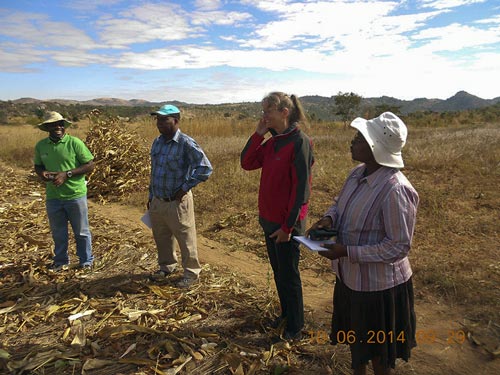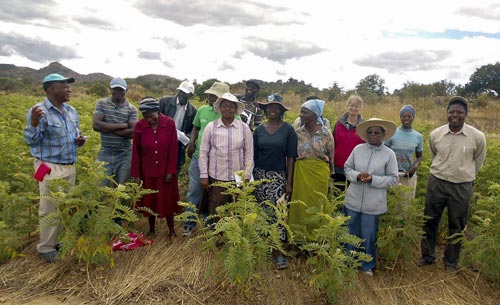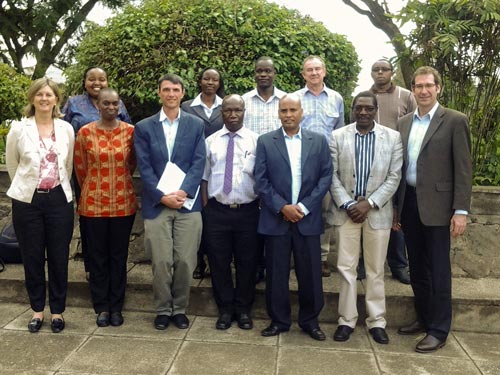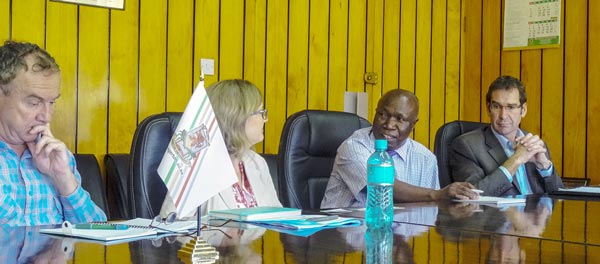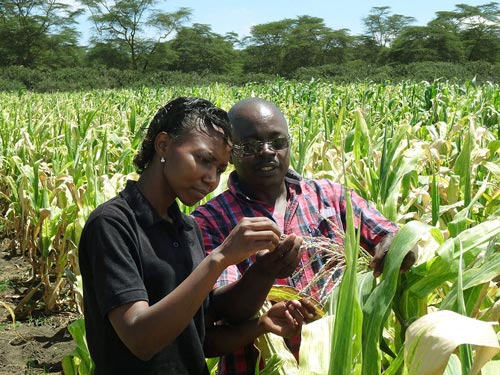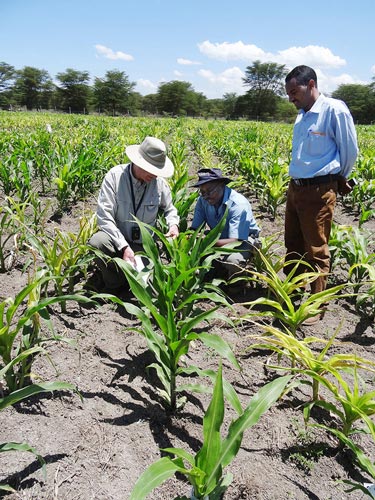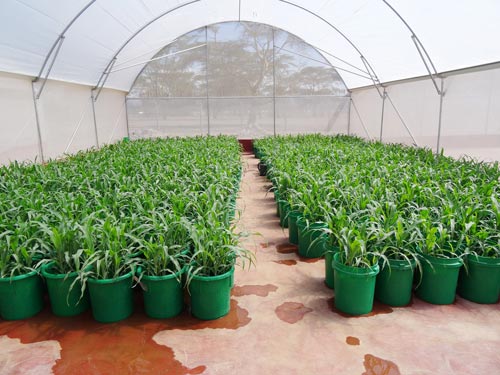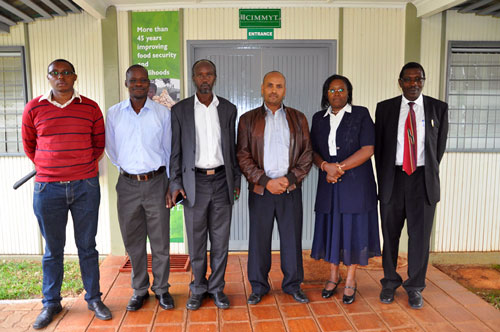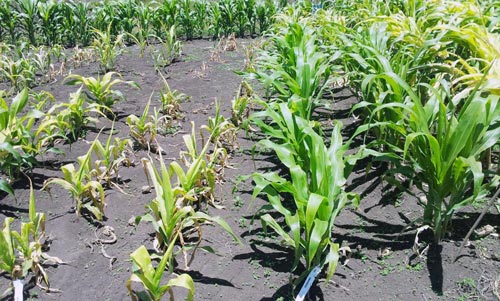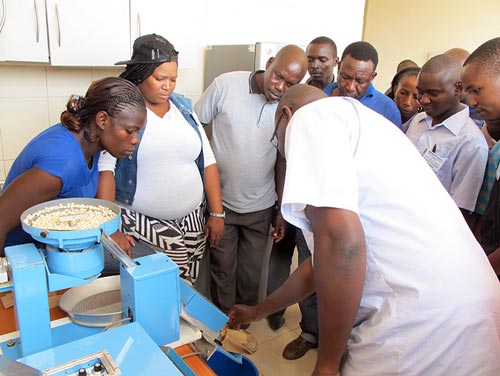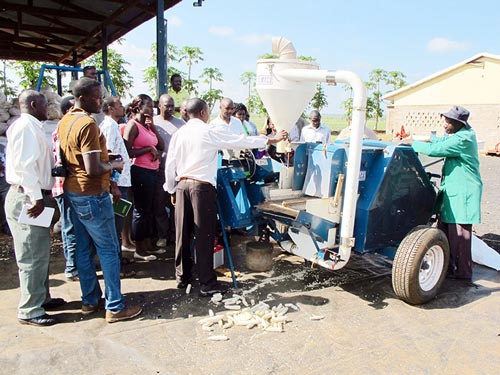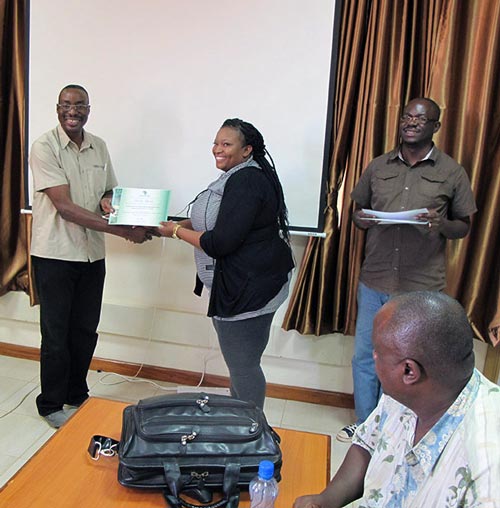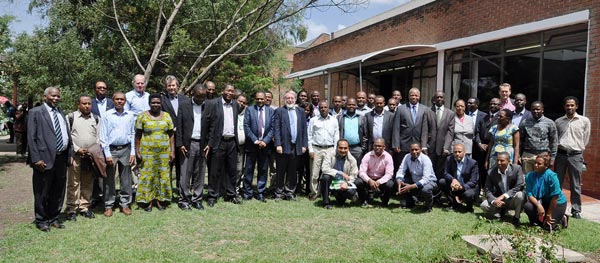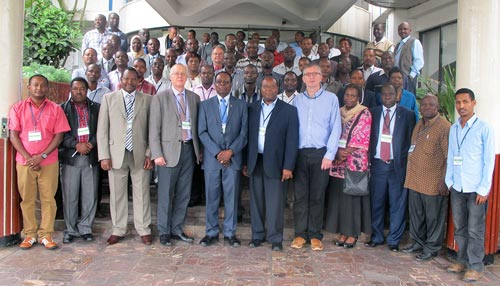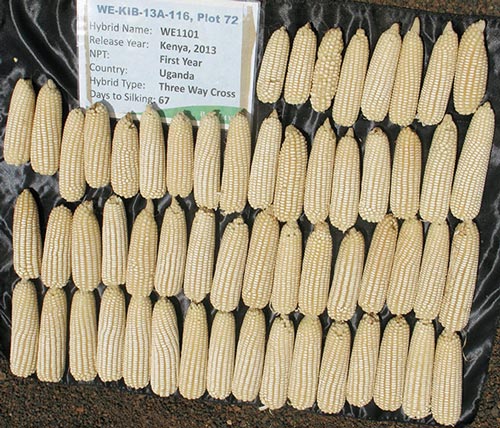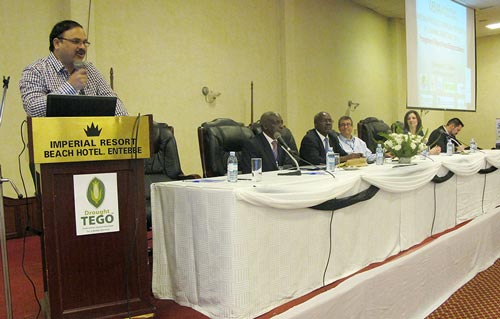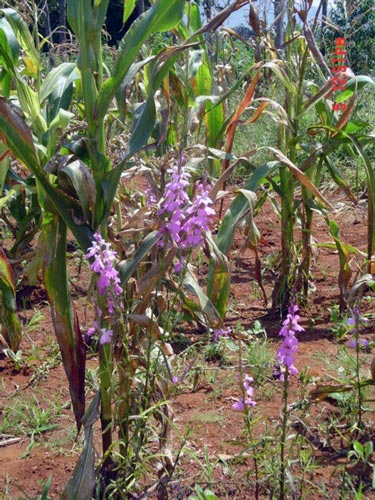Partnership on maize lethal necrosis in Africa makes significant progress
Partners of the Maize Lethal Necrosis (MLN) project in Africa, funded by the Bill & Melinda Gates Foundation and Syngenta Foundation for Sustainable Agriculture (SFSA), came together to review and discuss the progress and next steps for the project at a workshop on 14-15 May.
“The primary goal of this project is to identify MLN-tolerant germplasm, including inbred lines and pre-commercial hybrids, for potential deployment of MLN-tolerant varieties (with other relevant adaptive traits) through partners in Sub-Saharan Africa. The project also seeks to gain information regarding the genetics of resistance to the disease, create awareness and build capacity for more effective MLN management.
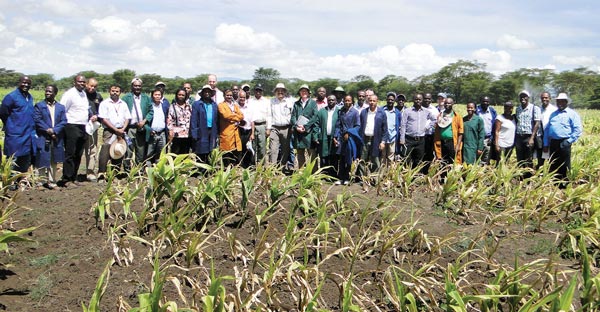
“As the project matures, we will be screening additional promising germplasm coming out of the MLN screening facility at Naivasha and from national agricultural research institute (NARI) partners at satellite testing centers in Kenya, Tanzania and Uganda under high natural disease pressure. This will help to validate the performance of the germplasm under MLN in important agro-ecologies,” said CIMMYT Global Maize Program Director and MLN-Africa project leader, BM Prasanna.
Mike Robinson, chief scientific advisor at SFSA and representatives of several seed companies and NARIs in Kenya, Tanzania and Uganda participated in the MLN Field Day at Naivasha on 14 May. The companies included East African Seed, Kenya Seed Company, Meru Agro, Monsanto, DuPont Pioneer and Seed Co Limited. “We hope to submit several germplasm entries for trials at the MLN screening facility in the next planting season,” said Francis Ndambuki, a maize breeder with Kenya Seed Company.
Less than a year after its opening, the MLN screening facility is now fully functional, evaluating materials from several partner organizations, including the International Institute for Tropical Agriculture, NARIs and seed companies. The partners/ visitors had an opportunity to see several trials taking place at the facility, as well as promising MLN-tolerant germplasm. Scientists involved in this project are working intensively – in collaboration with national and international institutions to develop and validate virus inoculation and germplasm screening protocols. They are also testing a large array of germplasm for responses against MLN under artificial inoculation, developing diagnostic techniques and building the capacity of national partners in MLN diagnostics and management.
The CIMMYT seed systems team is working on scaling-up the identified MLN-tolerant germplasm and distributing it to interested public and private partners in Africa. The progress made on the project’s diverse fronts was presented in detail, and the next steps were discussed during the project meeting held in Nairobi on 15 May. “We are pleased that CIMMYT teamed with KARI to address this important issue for Africa,” said Joseph Mureithi, KARI deputy director. Mureithi continued, “The MLN screening facility at Naivasha is a model of partnership between CGIAR centers, NARIs and the private sector,” adding that the results of the trials at the facility would have far-reaching impact. “Stresses such as drought and poor soil fertility could potentially compound the expression of the MLN disease,” said KARI virologist Dr. Anne Wangai, a key partner in this project. “This is a great opportunity to demonstrate the confluence of technologies – breeding, pathology and entomology,” said Robinson, urging the project partners to further strengthen the scientific edge and demonstrate how the research being undertaken on the disease can quickly result in products that benefit African farmers affected by the disease.
“Policy advocacy is key,” said Wilfred Mwangi, CIMMYT’s regional representative for Africa. He emphasized the need to fast-track registration and commercialization of the MLN-tolerant hybrids, especially in the MLN-affected countries. The Kenya Plant Health Inspectorate Service (KEPHIS) was commended for its commitment and support in fast-tracking the release of promising MLN-tolerant hybrids. “There is fast progress on the MLN research and the first wave of improved materials is coming now,” said Robinson, adding that he is looking forward to seeing more materials in the future. He emphasized the importance of coordination, policy clarity, communication and international synergies on MLN research and development in Africa.
